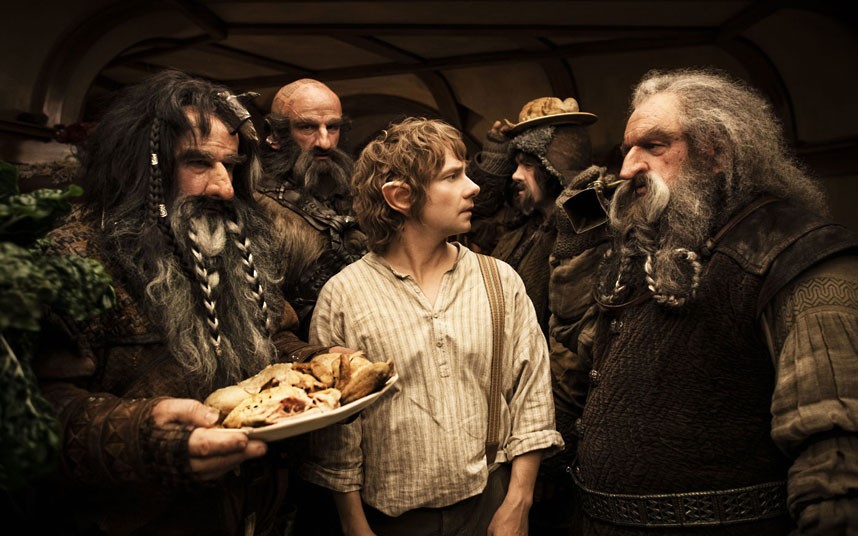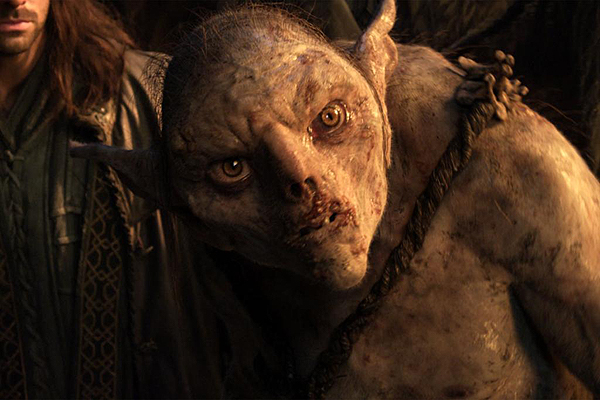A Reaction To The Hobbit's HFR 3D

With 48 RED EPIC cameras to its name (each assigned a name, from Witchy-Poo to Walter), the production of The Hobbit marks not only the first time Peter Jackson has stepped into the world of live-action 3D but represents, potentially, the dawn of a new cinematic standard: 48 fps.
Much has already been said about Jackson's new-found fondness for 48 frames per second (as opposed to the current movie standard of 24 fps), but the director himself admits the adoption of the technology is still very much “an experiment”, even if he does believe that the results speak for themselves: delivering a much more lifelike, smoother image that also makes 3D less of a strain on the eyes. His enthusiasm for the new format is indeed infectious, but nevertheless it's a huge gamble on his part. Ultimately then, has it worked?
It's a bit of a cop-out answer but in my opinion, yes and no. The effect is certainly jarring, yes, with double the frames per second resulting indeed in much smoother, more fluid motions, almost appearing as if the footage has been sped up to an unnatural speed. It's not something you can look past easily for a significant portion of the movie's introduction – it just takes time to adjust. So much so that my plan to see the HFR 3D format following a visit to see the standard 2D version of the film first is very much advised, especially for LOTR fans like myself who will want to appreciate The Hobbit on its own terms - that is, if you don't mind forking out for tickets twice over. Like 3D before it, HFR has already seen a staggering amount of negativity directed its way, with many saying The Hobbit shares more in common with a made-for-TV movie than a $200m blockbuster.
 But rest assured, HFR 3D really is worth going to see, whether now or with the remaining two entries from The Hobbit trilogy (The Desolation of Smaug, There And Back Again). It doesn't work all the time (typically, slower scenes such as those in Rivendell, where the smoothness of movement becomes all the more noticeable), but that's not to say the format is a total write-off. In fact, many of the criticisms sent its way are a little unfair to say the least, with many reporting the added 'realism' means many of the sets look, well, like sets, and the characters nothing more than actors in costume. (How very observant of them!)
But rest assured, HFR 3D really is worth going to see, whether now or with the remaining two entries from The Hobbit trilogy (The Desolation of Smaug, There And Back Again). It doesn't work all the time (typically, slower scenes such as those in Rivendell, where the smoothness of movement becomes all the more noticeable), but that's not to say the format is a total write-off. In fact, many of the criticisms sent its way are a little unfair to say the least, with many reporting the added 'realism' means many of the sets look, well, like sets, and the characters nothing more than actors in costume. (How very observant of them!)
No, the added 24 frames per second doesn't have any pronounced impact over the look of individual elements (why would it?), if anything the doubling of frames results in a much better clarity of picture which seems to improve the quality of 3D on display. And while the fluidity is jarring at first, there's no question the format comes into its own in those Jackson-favourite pans over the landscapes of Middle Earth - where stuttering that would otherwise make itself known is all but non-existent – and the more intense action sequences, particularly those within the dank darkness of the goblin caves (already the movie's best sequence).
It'll take time to appreciate 48 fps for sure (especially those hardened movie-goers) and its utilisation in The Unexpected Journey is, like Jackson says, very much an 'experiment' of sorts, yet it's far from the dud that many critics seem to believe it is, at least in my humble opinion. Middle Earth may have never looked the same, but that's not necessarily a bad thing.
So, what did you think?
Richard Birkett

